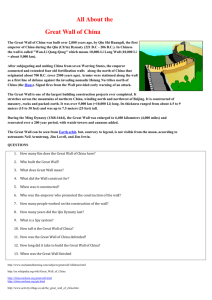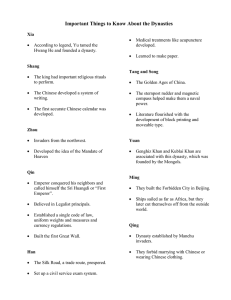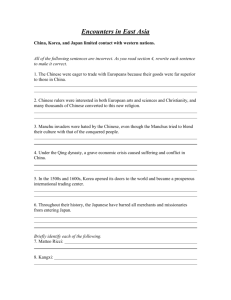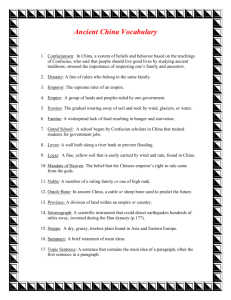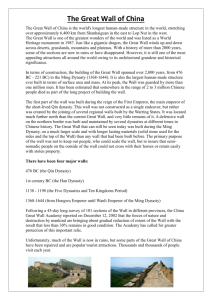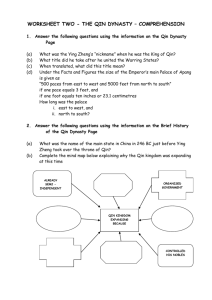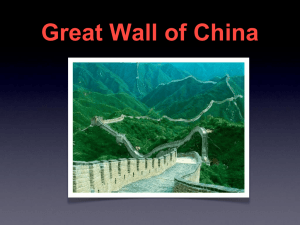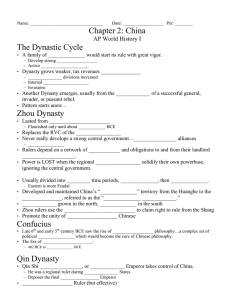Great Wall of China Worksheet: History & Purpose
advertisement
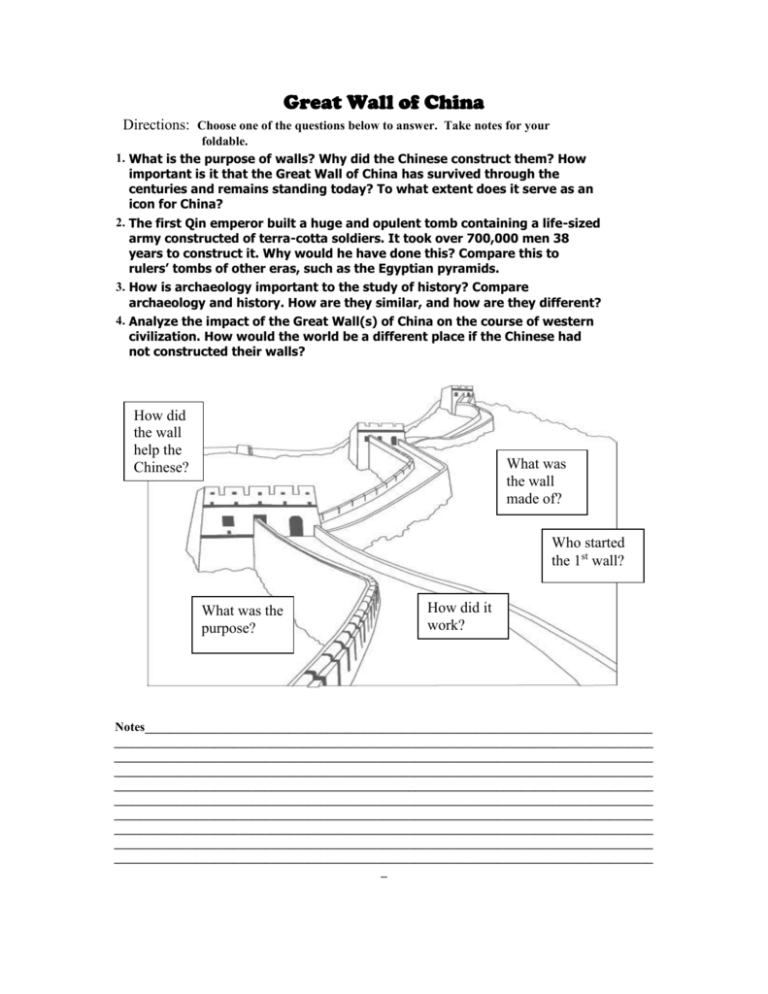
Great Wall of China Directions: Choose one of the questions below to answer. Take notes for your foldable. 1. What is the purpose of walls? Why did the Chinese construct them? How important is it that the Great Wall of China has survived through the centuries and remains standing today? To what extent does it serve as an icon for China? 2. The first Qin emperor built a huge and opulent tomb containing a life-sized army constructed of terra-cotta soldiers. It took over 700,000 men 38 years to construct it. Why would he have done this? Compare this to rulers’ tombs of other eras, such as the Egyptian pyramids. 3. How is archaeology important to the study of history? Compare archaeology and history. How are they similar, and how are they different? 4. Analyze the impact of the Great Wall(s) of China on the course of western civilization. How would the world be a different place if the Chinese had not constructed their walls? How did the wall help the Chinese? What was the wall made of? Who started the 1st wall? What was the purpose? How did it work? Notes_________________________________________________________________________________ ______________________________________________________________________________________ ______________________________________________________________________________________ ______________________________________________________________________________________ ______________________________________________________________________________________ ______________________________________________________________________________________ ______________________________________________________________________________________ ______________________________________________________________________________________ ______________________________________________________________________________________ ______________________________________________________________________________________ _ All About the Great Wall of China The Great Wall of China was built over 2,000 years ago, by Qin Shi Huangdi, the first emperor of China during the Qin (Ch'in) Dynasty (221 B.C - 206 B.C.). In Chinese the wall is called "Wan-Li QangQeng" which means 10,000-Li Long Wall (10,000 Li = about 5,000 km). After subjugating and uniting China from seven Warring States, the emperor connected and extended four old fortification walls along the north of China that originated about 700 B.C. (over 2500 years ago). Armies were stationed along the wall as a first line of defense against the invading nomadic Hsiung Nu tribes north of China (the Huns). Signal fires from the Wall provided early warning of an attack. The Great Wall is one of the largest building construction projects ever completed. It stretches across the mountains of northern China, winding north and northwest of Beijing. It is constructed of masonry, rocks and packed-earth. It was over 5,000 km (=10,000 Li) long. Its thickness ranged from about 4.5 to 9 meters (15 to 30 feet) and was up to 7.5 meters (25 feet) tall. During the Ming Dynasty (1368-1644), the Great Wall was enlarged to 6,400 kilometers (4,000 miles) and renovated over a 200 year period, with watch-towers and cannons added. The Great Wall can be seen from Earth orbit, but, contrary to legend, is not visible from the moon, according to astronauts Neil Armstrong, Jim Lovell, and Jim Irwin.
